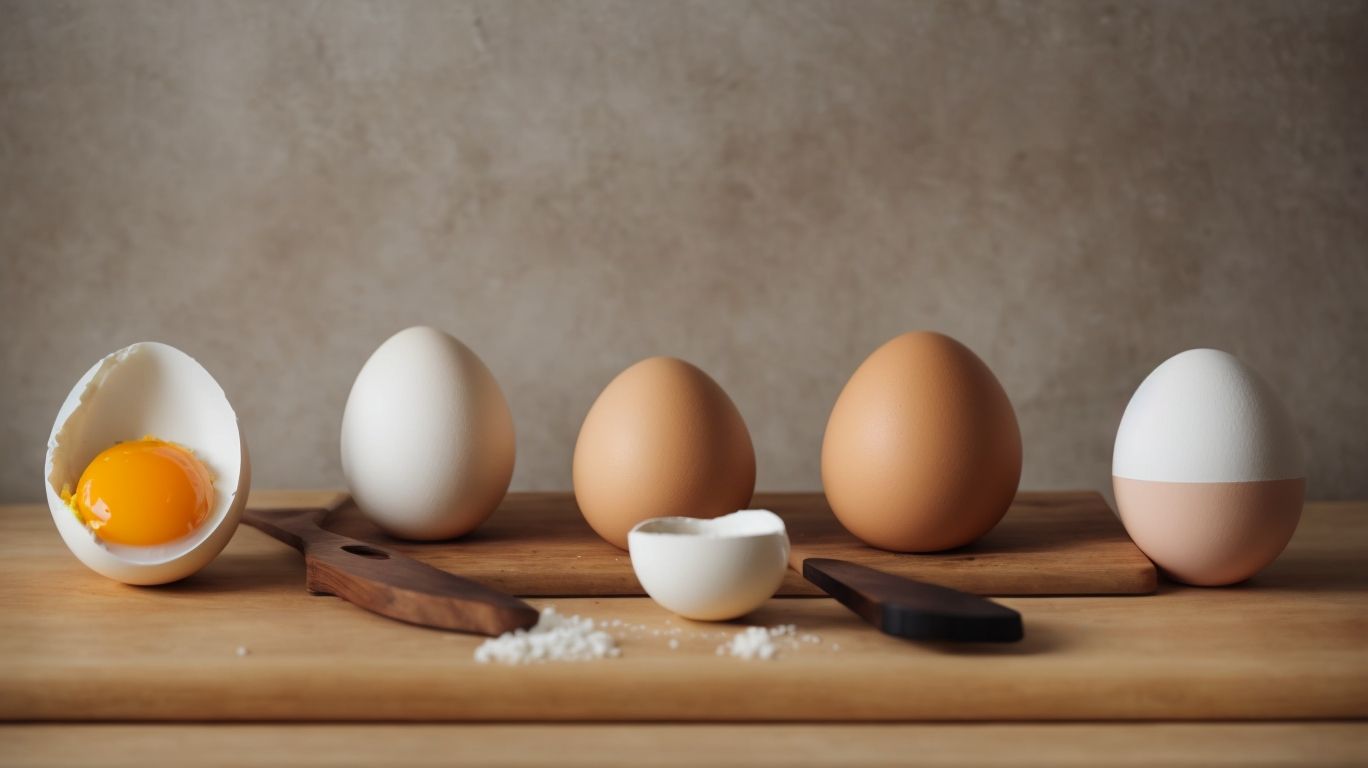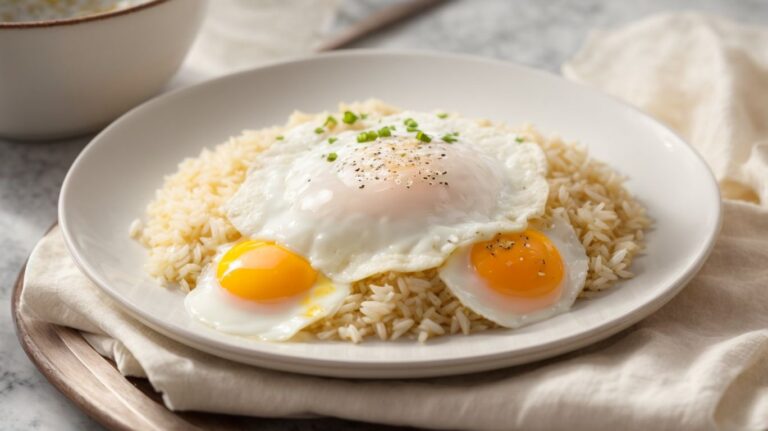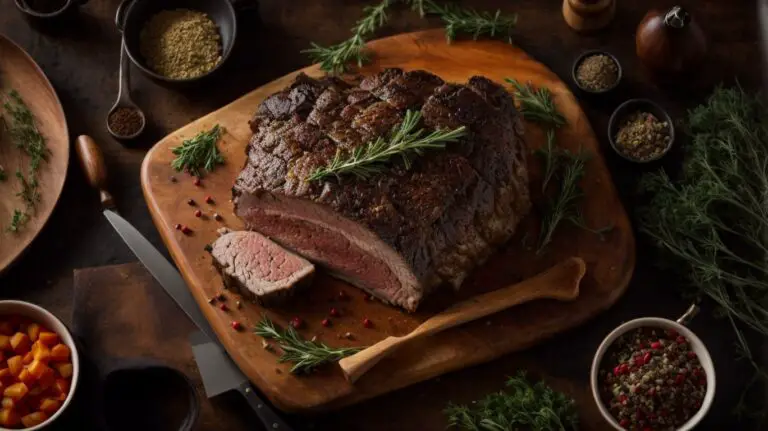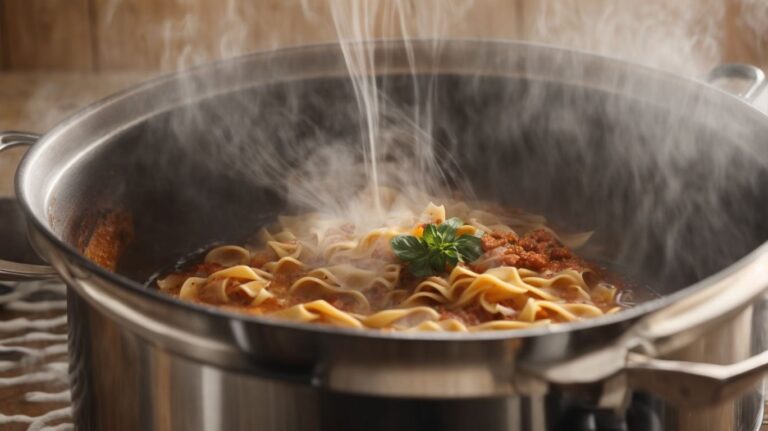How to Cook Eggs?
Are you ready to elevate your egg-cooking game?
We will explore the importance of knowing how to cook eggs and discuss the different ways you can prepare them, from boiled to baked.
Learn about the essential tools you need for cooking eggs, as well as tips for achieving perfectly cooked eggs every time.
Master the art of cooking eggs and impress your friends and family with your culinary skills!
Key Takeaways:
Why Is It Important To Know How To Cook Eggs?
Knowing how to cook eggs is essential as eggs are a versatile ingredient that can be prepared in various ways to create delicious and nutritious meals.
Mastering egg cooking techniques allows one to explore a wide range of possibilities when it comes to meal preparation. Eggs are not only a great source of protein but also offer essential nutrients like vitamins and minerals. By understanding the impact of different cooking methods, individuals can control the flavor and texture of eggs, whether they prefer them scrambled, poached, boiled, or fried.
What Are The Different Ways To Cook Eggs?
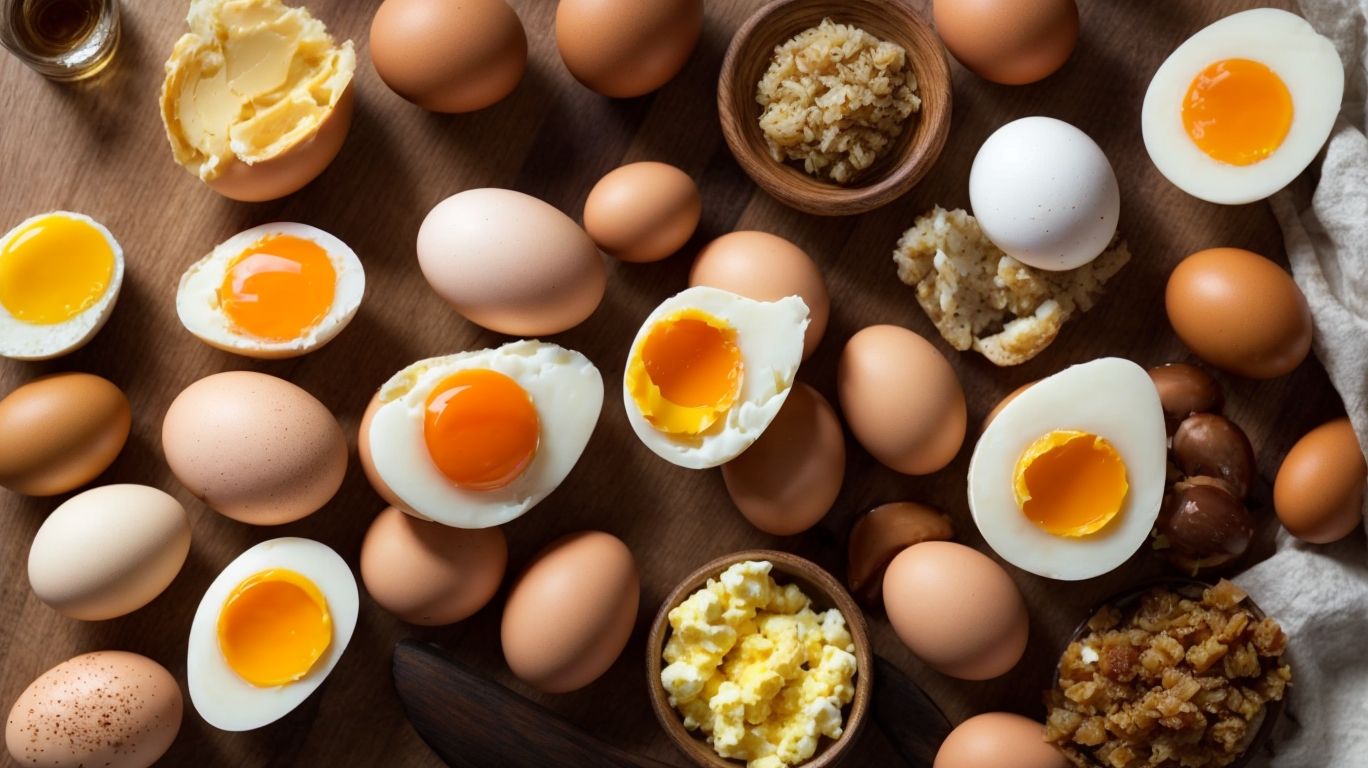
Credits: Poormet.Com – Keith Roberts
There are numerous ways to cook eggs, each offering a unique flavor and texture profile that can cater to different preferences and culinary styles.
Boiled Eggs
Boiled eggs are a popular choice for a quick and easy meal, with options ranging from soft-boiled with runny yolks to hard-boiled with fully cooked yolks.
In terms of boiling eggs, the cooking time will significantly impact the desired yolk consistency. For soft-boiled eggs with a creamy yolk and a slightly runny center, aim for a cooking time of about 6-7 minutes. If you prefer a hard-boiled egg with a fully cooked yolk, leave it boiling for 10-12 minutes.
Peeling boiled eggs can be a tricky task, but there are a few tricks to make it easier. Plunging the eggs into cold water immediately after boiling helps loosen the shell, making it simpler to peel off. Using older eggs rather than fresh ones can also make peeling easier.
Fried Eggs
Fried eggs are a classic breakfast choice, offering a delicious combination of crispy edges and runny yolks that can be customized to individual preferences.
One key technique for achieving the desired yolk texture is to carefully control the heat. Start by heating a non-stick pan over medium-low heat to prevent the eggs from cooking too quickly. To avoid overcooking, try covering the pan briefly towards the end of cooking to gently set the yolks without firming them up entirely. Experiment with different cooking styles such as sunny-side-up, over easy, or scrambled to discover your favorite way to enjoy fried eggs.
Scrambled Eggs
Scrambled eggs are a quick and versatile option for any meal, with variations ranging from creamy to fluffy textures depending on cooking methods.
One popular technique for achieving creamy scrambled eggs is to cook them slowly over low heat, constantly stirring to prevent overcooking. This results in a velvety smooth texture that is incredibly satisfying.
On the other hand, for those who prefer a light and fluffy scramble, a higher heat and less stirring may be the way to go. Adding a splash of milk or cream can also enhance the richness and creaminess of the eggs, elevating them to a whole new level of deliciousness.
Experimenting with different seasonings like fresh herbs, cheese, or even a touch of truffle oil can take scrambled eggs from basic to gourmet in no time.
Poached Eggs
Poached eggs offer a delicate and elegant presentation, with perfectly cooked whites and a creamy yolk center that can elevate dishes with their luxurious texture.
Mastering the art of poaching eggs doesn’t have to be intimidating; it’s all about finding the right techniques that work for you. One key factor is ensuring the water temperature is just below boiling to prevent the egg whites from dispersing in the water. Using fresh eggs can help maintain the shape of the poached eggs as the proteins are firmer. Patience is also crucial in achieving that ideal yolk consistency that beautifully blends with the whites.
Baked Eggs
Baked eggs offer a unique twist on traditional egg dishes, with possibilities for incorporating various ingredients and flavors for a customizable culinary experience.
One popular method of baking eggs is creating shakshuka, a North African and Middle Eastern dish where eggs are poached in a spiced tomato and pepper sauce. This flavorful combination of tangy tomatoes, bell peppers, onions, and aromatic spices like cumin and paprika creates a rich base for the eggs to cook in, infusing them with a myriad of delicious flavors.
Omelettes
Omelettes are a versatile and customizable option for any meal, allowing for endless combinations of fillings and flavors to suit individual preferences.
In terms of achieving the perfect fold in an omelette, it’s essential to master the technique of gently lifting and rolling the edges towards the center while the eggs are still slightly runny on top. This motion creates those classic layers and ensures a fluffy texture inside.
Pairing ingredients such as diced bell peppers, onions, and shredded cheese can add a burst of color and flavor. To elevate your omelette game, try incorporating fresh herbs like chives or parsley for a pop of freshness, or experiment with different cheeses such as feta or gruyère for a delicious twist.
What Are The Essential Tools For Cooking Eggs?
To cook eggs effectively, having the right tools is crucial. From a non-stick pan to a reliable whisk, these essentials can make the cooking process smoother and more enjoyable.
Non-stick Pan
A non-stick pan is a valuable tool for cooking eggs, ensuring easy release and minimal sticking for a hassle-free cooking experience.
Using a non-stick pan not only simplifies the cooking process but also promotes healthier cooking as it requires less oil or butter. The slick surface of these pans reduces the chances of overcooking or burning your eggs, making them turn out perfectly textured and evenly cooked. For those looking to reduce calories or make lighter dishes, non-stick pans are a great choice.
Maintaining a non-stick pan is relatively easy. To ensure its longevity, avoid using metal utensils that might scratch the coating, and hand wash it gently with a soft sponge to prevent damage. Regular seasoning with a little oil can also help preserve its non-stick properties. When properly cared for, a non-stick pan can last for several years, providing consistent results for your egg dishes.
Whisk
A whisk is an essential kitchen tool for incorporating air into eggs, creating light and fluffy textures in dishes like scrambled eggs and omelettes.
There are various types of whisks available, such as balloon whisks, French whisks, and flat whisks, each designed for specific tasks. The balloon whisk is ideal for whipping and aerating, the French whisk for mixing, and the flat whisk for deglazing and stirring in flat pans.
To achieve the desired lightness, hold the whisk at a slight angle and move it in a circular motion while whisking. This motion helps to incorporate air evenly and efficiently to create a consistent texture in your eggs.
Spatula
A spatula is a versatile utensil for cooking eggs, allowing for gentle flipping, stirring, and serving to ensure delicate egg dishes remain intact.
In terms of egg cooking, the spatula plays a crucial role in achieving the perfect texture and presentation. Ensuring that your eggs are sufficiently cooked while maintaining their tenderness is a delicate balance that requires a specialized tool like a spatula. The variations in spatula design, including plastic, silicone, and metal options, cater to different cooking preferences and materials. Choosing the right spatula material can impact how easily you can glide under delicate eggs for flipping or stirring. Whether you’re making a fluffy omelette, sunny-side-up eggs, or a delicate scramble, knowing how to finesse a spatula is key to achieving delicious results.
Egg Timer
An egg timer is a handy tool for achieving precise cooking times, ensuring that eggs are cooked to perfection with consistent results.
Timing plays a crucial role in the preparation of various egg dishes, from soft-boiled eggs to perfectly poached ones. Using an egg timer eliminates the guesswork and allows you to enjoy eggs cooked exactly as you like them each time. Consistency is key in the kitchen, and an egg timer helps you achieve that effortlessly.
To ensure accuracy when using an egg timer, always follow the recommended cooking times provided in your recipes. You can also experiment with different timer settings to find the perfect doneness for your eggs based on personal preference.
If you don’t have an egg timer on hand, you can always use other methods like using a watch or a kitchen clock to keep track of cooking times, but an egg timer offers the convenience of dedicated timekeeping for your egg preparations.
Egg Piercer
An egg piercer is a specialized tool that helps prevent eggshell cracking during boiling by creating small holes to release internal pressure.
Using an egg piercer is essential in maintaining the integrity of the eggshell while cooking, as it allows the steam to escape gradually without causing the shell to rupture. This results in perfectly boiled eggs with smooth, intact shells , which are easier to peel. By puncturing the egg before boiling, you ensure that the egg cooks evenly and reduces the risk of messy spillage in the boiling water. The small puncture made by the egg piercer is barely noticeable and does not affect the overall appearance of the egg once it is peeled. This simple yet effective tool is a must-have for anyone who enjoys perfectly cooked eggs without the hassle of dealing with cracked shells.
Tips For Perfectly Cooked Eggs
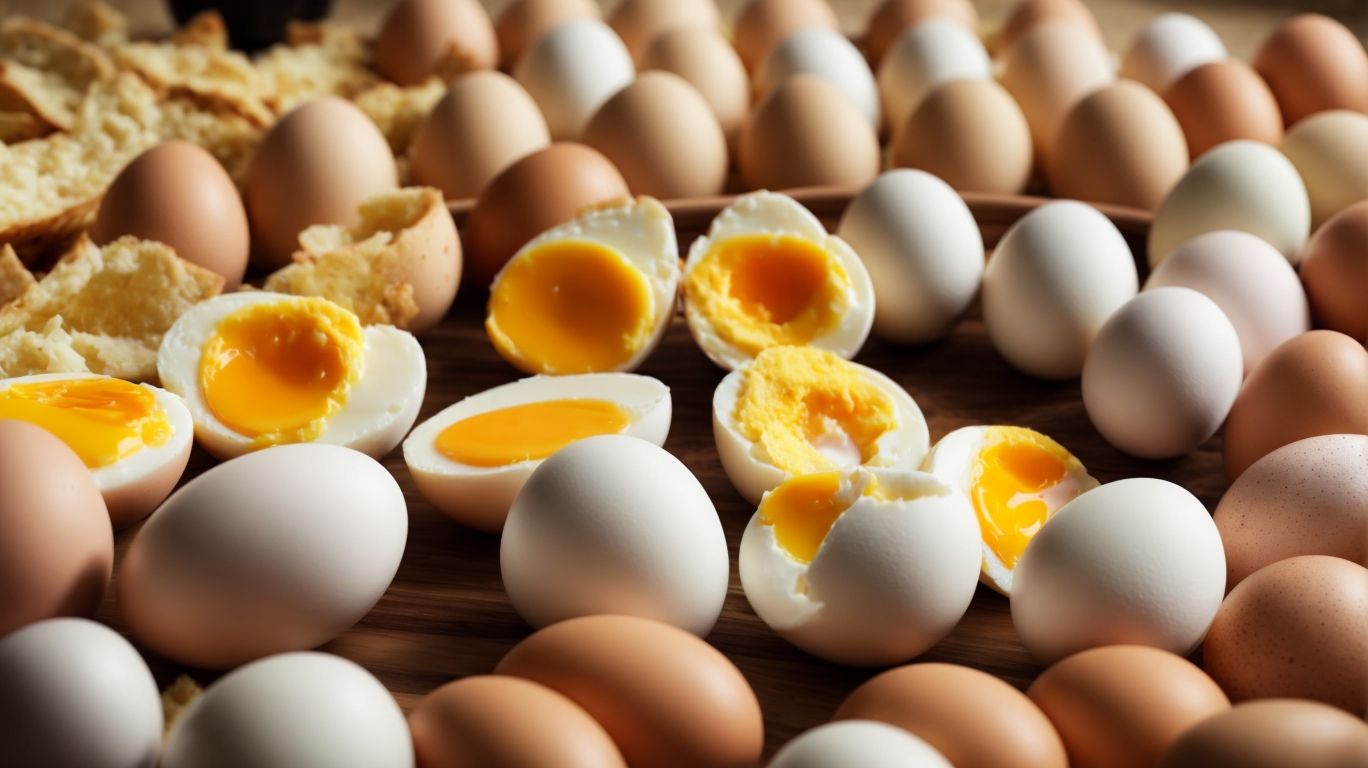
Credits: Poormet.Com – Joshua King
Achieving perfectly cooked eggs requires attention to detail and a few essential tips. From using fresh eggs to mastering the right pan and heat levels, these guidelines can elevate your egg-cooking skills.
Use Fresh Eggs
Starting with fresh eggs is key to achieving optimal flavor and texture in cooked dishes, as the quality of the eggs can significantly impact the final result.
In terms of sourcing, try to get eggs from local farmers or farmers’ markets for the freshest options. The closer the eggs are produced, the higher the chances of them being freshly laid. Quality eggs will have firm whites and vibrant yolks, indicating their freshness. Proper storage is also crucial in maintaining egg freshness. Store eggs in their original carton in the coldest part of the refrigerator, away from strong odors. Fresh eggs not only improve the overall taste of your dishes but also contribute to a better texture, especially in baked goods like cakes and custards.
Use the Right Pan and Heat
Selecting the appropriate pan and maintaining the right heat levels are crucial factors in ensuring even cooking and desired textures in egg dishes.
In terms of pan selection, opt for nonstick pans for delicate eggs like omelettes, as they prevent sticking and facilitate easy flipping. Cast iron pans are excellent for achieving a crispy exterior on fried eggs. Heat control is equally important – start with medium heat to avoid toughening the eggs, and adjust as needed. With proper pan selection and heat management, you can elevate your egg dishes to restaurant-quality standards.
Add Salt and Pepper at the Right Time
Seasoning eggs with salt and pepper at the optimal time can enhance flavors without affecting texture, allowing for a balanced taste profile in every bite.
In terms of timing, it’s best to add a sprinkle of salt and pepper towards the end of cooking or just after serving to maintain the brightness of the flavors. For scrambled eggs, incorporating the seasoning while whisking the eggs ensures even distribution of the seasonings throughout the dish.
Varying the type of salt can also bring distinct flavors to your eggs. Consider using sea salt for a more delicate touch or smoked salt for a rich and robust taste. Pepper can be coarsely ground for a stronger peppery kick or finely ground for a milder, uniform distribution of heat.
Don’t Overcook the Eggs
Avoiding overcooking is essential to prevent the eggs from becoming rubbery or dry, preserving their natural textures and flavors for a delightful eating experience.
One key visual cue to watch for when cooking eggs is the color change of the yolks and whites. For a perfect soft-boiled egg with a runny yolk, aim for a bright yellow yolk and translucent whites. Hard-boiled eggs should have a fully cooked, opaque yolk and firm whites.
Timing is crucial, whether you prefer your eggs sunny-side up, scrambled, or poached. Each method requires different cooking durations to achieve the desired consistency, ranging from a few minutes for a soft-boiled egg to around 10 minutes for a hard-boiled one. It’s essential to adjust the heat intensity to achieve the perfect texture; for instance, gentle heat for creamy scrambled eggs and higher heat for a quick sear on a fried egg. Experimenting with different techniques such as steaming, boiling, or frying can help you discover your favorite way to enjoy eggs without overcooking them.
Experiment with Different Ingredients and Flavors
Embrace creativity by experimenting with diverse ingredients and flavor combinations to elevate your egg dishes with unique tastes and textures.
In terms of creating delicious egg-centric meals, the possibilities are truly endless. Whether you prefer your eggs scrambled, poached, fried, or as part of a decadent omelette, each cooking method offers a chance to add exciting elements to your dish. From simple additions like herbs and spices to more complex pairings such as smoked salmon, avocado, or feta cheese, you can truly enhance the flavor profile of your eggs. Don’t be afraid to think outside the box and try unconventional combinations – the key is experimentation. Remember, even the most unexpected ingredients can come together to create a symphony of flavors that will delight your taste buds.
Conclusion: Mastering The Art of Cooking Eggs
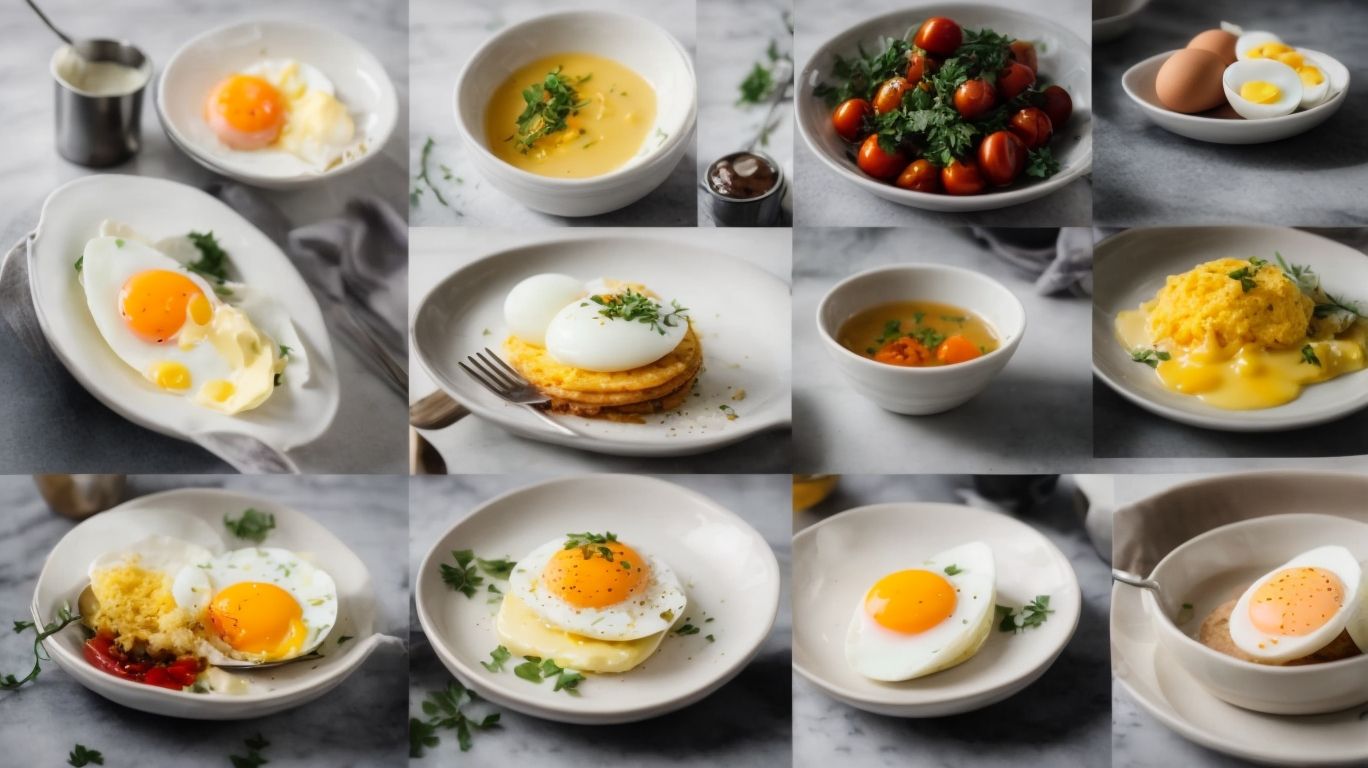
Credits: Poormet.Com – Jeremy Torres
Mastering the art of cooking eggs opens up a world of culinary possibilities, allowing one to create delicious and satisfying dishes that showcase the versatility and richness of this humble ingredient.
Whether you prefer them scrambled, poached, fried, or boiled, eggs are a staple in many cuisines around the world for good reasons. The way you cook an egg can completely transform its taste and texture. From the creamy indulgence of a perfectly cooked omelette to the simple comfort of a runny yolk on toast, there is something truly magical about the humble egg. Learning to handle eggs with finesse and precision is an essential skill that can elevate your cooking to new heights.
Frequently Asked Questions
How to Cook Eggs?
What are the basic steps to cooking eggs?
The basic steps to cooking eggs are cracking them into a pan, seasoning to taste, and then cooking until desired doneness is achieved.
How to Cook Eggs?
How do I know when my eggs are fully cooked?
To test for doneness, gently press on the yolk with a fork or spatula. If the yolk is still runny, continue cooking until it reaches your desired consistency.
How to Cook Eggs?
Can I cook eggs in the microwave?
Yes, it is possible to cook eggs in the microwave. However, it is important to note that they may not turn out as well as if they were cooked on the stovetop.
How to Cook Eggs?
What is the best way to cook scrambled eggs?
To make the perfect scrambled eggs, crack them into a bowl and whisk until well combined. Then, cook them over medium heat, constantly stirring, until they reach a creamy and fluffy texture.
How to Cook Eggs?
What’s the secret to making a perfectly poached egg?
The key to a perfectly poached egg is to use fresh eggs and to add a splash of vinegar to the boiling water. This helps the egg hold its shape and prevents it from spreading in the water.
How to Cook Eggs?
Can I prepare eggs ahead of time?
Yes, you can prepare eggs ahead of time by hard boiling or soft boiling them and storing them in the fridge. You can also make a frittata or quiche ahead of time and reheat slices for a quick breakfast option.

